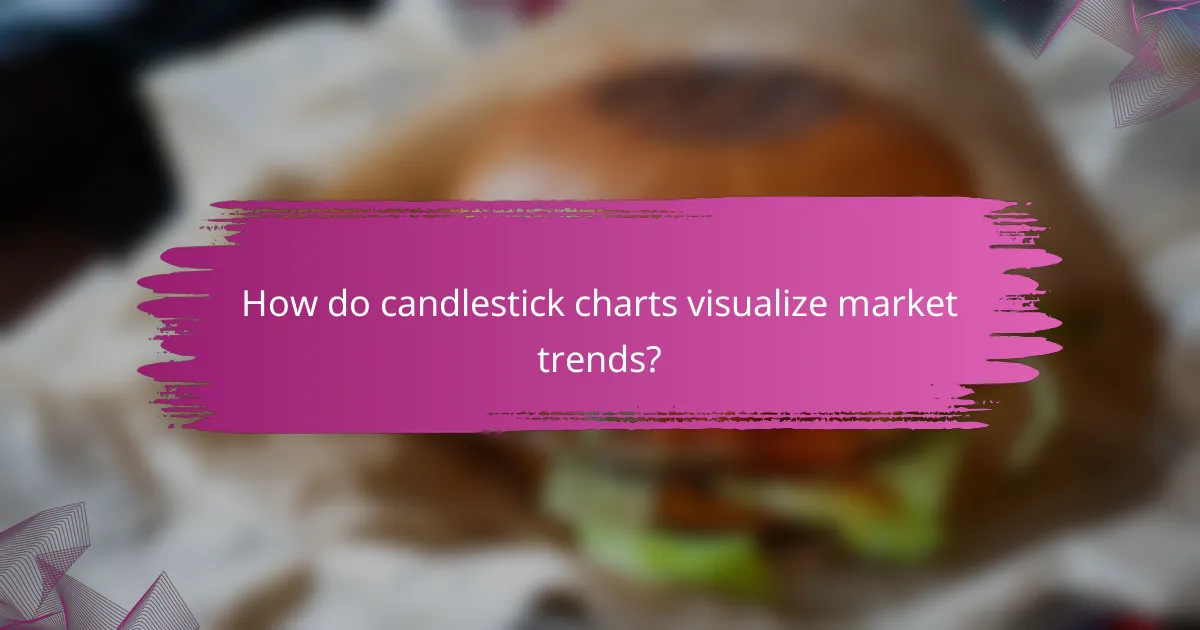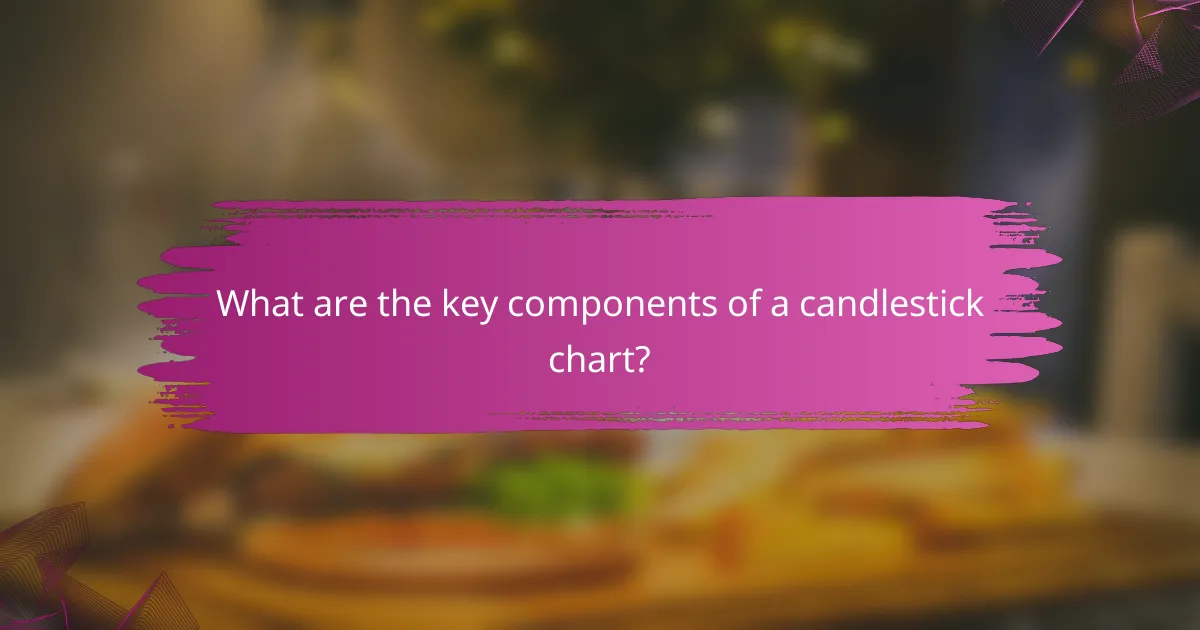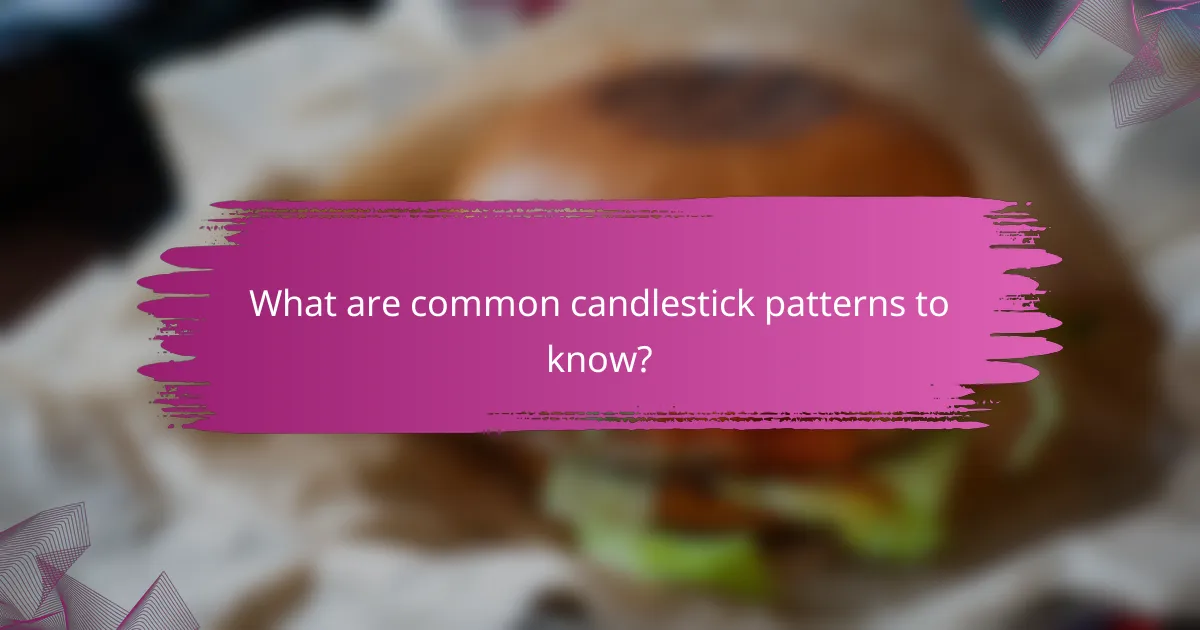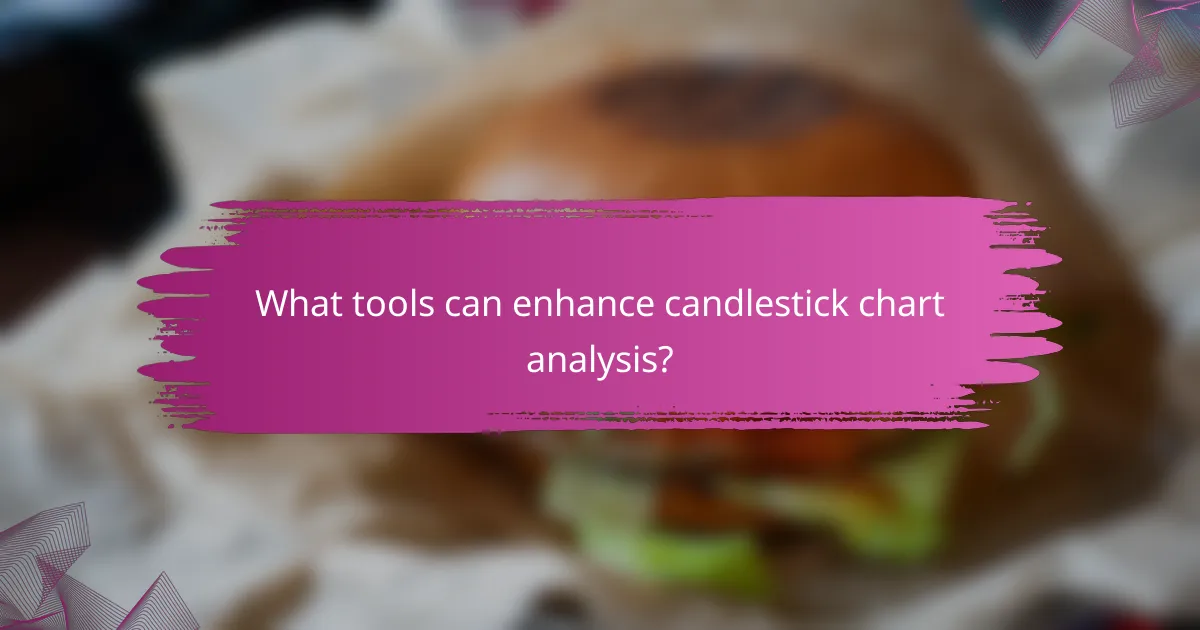Candlestick charts are essential tools in financial analysis, providing a clear visualization of market trends through the representation of price movements over designated time intervals. Each candlestick encapsulates key price information—open, high, low, and close—enabling traders to quickly interpret market behavior and identify potential trends. By analyzing candlestick patterns, traders can make informed decisions regarding buying or selling opportunities based on historical price data.

How do candlestick charts visualize market trends?
Candlestick charts visualize market trends by displaying price movements over specific time intervals. Each candlestick represents the open, high, low, and close prices, allowing traders to quickly assess market behavior and identify potential trends.
Price movement representation
Candlestick charts provide a clear representation of price movements through individual candles. Each candle consists of a body and wicks, where the body indicates the opening and closing prices, while the wicks show the highest and lowest prices during the time period. This format allows traders to easily spot bullish or bearish trends.
For example, a green candle signifies that the closing price is higher than the opening price, indicating upward momentum, while a red candle shows the opposite. Traders often look for patterns, such as engulfing or doji candles, to make informed decisions.
Timeframe analysis
Candlestick charts can be analyzed across various timeframes, from minutes to days or even weeks. The choice of timeframe affects the granularity of the data presented; shorter timeframes provide more detail but can also introduce noise, while longer timeframes offer a broader view of market trends.
For effective analysis, traders often select a timeframe that aligns with their trading strategy. Day traders might use 5-minute or 15-minute charts, while swing traders may prefer daily or weekly charts to capture significant price movements.
Market sentiment indication
Candlestick patterns can indicate market sentiment, reflecting the psychology of traders. For instance, a series of consecutive green candles may suggest strong bullish sentiment, while a series of red candles could indicate bearish sentiment. Recognizing these patterns helps traders gauge market mood and make strategic decisions.
Common patterns like hammers, shooting stars, and bullish or bearish engulfing patterns can signal potential reversals or continuations in trends. Understanding these signals allows traders to anticipate market movements and adjust their strategies accordingly.

What are the key components of a candlestick chart?
A candlestick chart consists of several key components that visually represent market trends and price movements over a specific time period. The main elements include the open, high, low, and close prices, as well as the body and wick characteristics of each candlestick.
Open, high, low, close
The open, high, low, and close (OHLC) are the fundamental data points of a candlestick. The ‘open’ is the price at which a trading period begins, while the ‘close’ is the price at which it ends. The ‘high’ and ‘low’ represent the highest and lowest prices reached during that period, respectively.
For example, if a candlestick shows an open of $50, a high of $55, a low of $48, and a close of $52, traders can infer that the price fluctuated within that range. Understanding these components helps traders identify market trends and potential reversal points.
Body and wick characteristics
The body of a candlestick illustrates the price range between the open and close, while the wicks (or shadows) extend from the body to show the high and low prices. A longer body indicates stronger price movement, while shorter bodies suggest less volatility.
For instance, a candlestick with a long body and short wicks signals strong buying or selling pressure, whereas a candlestick with long wicks and a small body may indicate indecision in the market. Analyzing these characteristics can provide insights into market sentiment.
Color coding significance
Color coding in candlestick charts typically indicates the direction of price movement. A green or white candlestick usually signifies that the closing price is higher than the opening price, indicating bullish sentiment. Conversely, a red or black candlestick indicates a closing price lower than the opening price, reflecting bearish sentiment.
Traders often use color coding to quickly assess market conditions. For example, a series of consecutive green candlesticks may suggest a strong upward trend, while a pattern of red candlesticks could indicate a downward trend. Recognizing these color patterns can assist in making informed trading decisions.

How can traders use candlestick patterns for financial analysis?
Traders utilize candlestick patterns to analyze market trends and make informed financial decisions. These patterns provide visual cues about price movements, helping traders identify potential buying or selling opportunities based on historical data.
Trend reversal identification
Trend reversal identification involves recognizing specific candlestick formations that signal a potential change in market direction. Common patterns include the hammer, shooting star, and engulfing patterns, which indicate that the current trend may be losing momentum.
For example, a hammer pattern appearing at the end of a downtrend suggests a possible bullish reversal. Traders often look for confirmation through subsequent price action before making a trade decision.
Continuation pattern recognition
Continuation pattern recognition focuses on identifying candlestick formations that suggest the prevailing trend will continue. Patterns such as flags, pennants, and the doji can indicate that the market is consolidating before resuming its previous direction.
For instance, a doji appearing in an uptrend may signal indecision, but if followed by a bullish candle, it can confirm the continuation of the upward movement. Traders should monitor volume and other indicators to validate these patterns.
Risk management strategies
Effective risk management strategies are crucial when trading based on candlestick patterns. Traders should set stop-loss orders to limit potential losses and define their risk-reward ratios before entering a trade.
A common approach is to place a stop-loss just below the low of a bullish reversal pattern or above the high of a bearish reversal pattern. This helps protect capital while allowing for potential gains if the trade moves in the desired direction.

What are common candlestick patterns to know?
Common candlestick patterns are crucial for understanding market trends and making informed trading decisions. Recognizing these patterns can help traders anticipate price movements and identify potential entry and exit points.
Doji pattern
The Doji pattern occurs when the opening and closing prices of a candlestick are virtually the same, resulting in a cross-like shape. This pattern indicates indecision in the market, suggesting that neither buyers nor sellers are in control.
Traders often look for Doji patterns at the end of a trend, as they can signal a potential reversal. A Doji appearing after a bullish trend may indicate a shift towards bearish sentiment, while one after a bearish trend could suggest a bullish reversal.
Hammer pattern
The Hammer pattern features a small body at the upper end of the trading range and a long lower shadow, resembling a hammer. This pattern typically appears after a downtrend and signals a potential reversal to the upside.
For effective trading, look for a Hammer pattern confirmed by subsequent bullish candlesticks. Ensure that the lower shadow is at least twice the length of the body, which strengthens the reversal signal.
Engulfing pattern
The Engulfing pattern consists of two candlesticks where the second candle completely engulfs the body of the first. A bullish engulfing pattern occurs after a downtrend and indicates a potential reversal, while a bearish engulfing pattern appears after an uptrend, signaling a possible downturn.
To trade an Engulfing pattern, confirm it with increased volume on the engulfing candle. This confirmation can enhance the reliability of the signal, making it a valuable tool for traders looking to capitalize on trend reversals.

How do candlestick charts compare to other chart types?
Candlestick charts provide a more detailed view of price movements compared to other chart types, highlighting open, high, low, and close prices within a specific time frame. This makes them particularly useful for traders seeking to analyze market trends and make informed decisions.
Line charts
Line charts display price movements over time using a single line that connects closing prices. They offer a clear and straightforward view of trends but lack the detailed information provided by candlestick charts, such as opening and closing prices. For quick assessments of price direction, line charts can be effective, but they may miss critical price action details.
Bar charts
Bar charts represent price movements with vertical bars indicating the high and low prices for a specific period, along with horizontal ticks for opening and closing prices. While they provide more information than line charts, they can be harder to interpret at a glance compared to candlestick charts, which use color coding to indicate bullish or bearish trends. Traders often prefer candlestick charts for their visual clarity and ease of use.
Point and figure charts
Point and figure charts focus on price movements without considering time, using X’s to indicate rising prices and O’s for falling prices. This method simplifies the analysis by filtering out minor price fluctuations, making it easier to identify significant trends. However, they do not provide the same level of detail regarding price action as candlestick charts, which can limit their effectiveness for short-term trading strategies.

What tools can enhance candlestick chart analysis?
Several tools can significantly enhance candlestick chart analysis, providing traders with better insights into market trends and price movements. Utilizing advanced charting platforms, technical indicators, and analytical software can help in making informed trading decisions.
TradingView platform
TradingView is a popular web-based platform that offers comprehensive tools for candlestick chart analysis. It provides a user-friendly interface with customizable charts, allowing traders to visualize price movements effectively. Users can access a wide range of indicators and drawing tools to enhance their analysis.
One of the key features of TradingView is its social networking aspect, where traders can share ideas and strategies. This community-driven approach allows users to learn from others and gain different perspectives on market trends. Additionally, the platform supports real-time data, which is crucial for making timely trading decisions.
To maximize the benefits of TradingView, consider exploring its extensive library of scripts and indicators. Many users create custom tools that can be applied to candlestick charts, enhancing your analysis further. Remember to take advantage of the platform’s free trial to familiarize yourself with its features before committing to a subscription.
